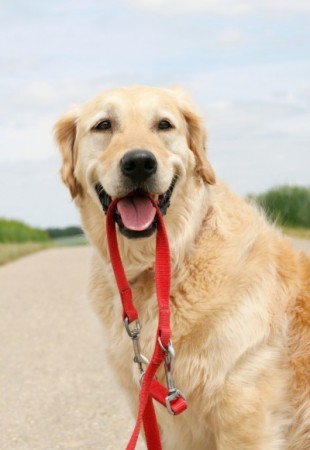Whether you are bringing home a new dog or training your existing dog, we put together our top obedience tips every dog should know:
1. Make your training sessions short and sweet
Dogs tend to have a low level of concentration so keep training sessions short.
Twenty minutes is a good time frame to introduce a trick or command and then follow it up with either a 20-minute session later that day or the following day. If your dog is starting to lose focus (even if it’s only been 5 or 10 minutes), wrap it up and start again tomorrow. You will not gain anything by forcing the training.
Once your dog understands the steps of learning a new trick or command, they will be able to learn new tricks faster (sometimes in the first try).
2. Make dog training fun and rewarding
Dogs respond to positive reinforcement and stimulation. To make your training more effective, use rewards that your dog loves: a special toy, high-value treats (like chicken vs. kibble), belly rubs or walks. Whatever it is that your dog goes nuts for, use that.
Upping the ante with high value rewards improves motivation and produces faster results. Conversely, not praising or rewarding your dog or only using verbal praise will reduce the effectiveness and lengthen the timeline of your training.

3. Teach effective recall
For safety and practicality, recall is the most important command that you will teach your dog. However, there are two common mistakes people make when teaching recall:
The first is that people become frustrated when their dog is not listening to them, so they may grit their teeth and in a deeper, sterner voice, say “COME HERE NOW.” And your dog still does not come. That’s for the simple reason that dogs are smart. Why on earth would anyone go to a person that is angry? Kids don’t do it. Neither do dogs. Be sure to always convey a happy, positive voice when calling your dog’s name or recall command.
The second mistake is that people inadvertently scold their dog when they should be rewarding their dog. It’s crucial that your dog perceives you to be more important than other dogs, toys, treats and even squirrels. You accomplish this by always rewarding your dog when they come. That means even if your dog does not come for the first five “come here” attempts, when she finally does come, you reward her with praise, scratches and treats – not scold her. That’s because she has already forgotten that she didn’t come those first five times. If you scold her instead, she will perceive that coming to you was incorrect and definitely not come to you the next time you call her.
4. Set boundaries early on
Boundaries need to be clear and consistent. If you have a puppy, behaviors that might seem cute now, can be problematic when your dog is older (and much bigger). There are a few examples of boundaries that are important to teach early on:
• No jumping on people (including you)
• No biting or rough playing
• No sitting on furniture (this is usually a good one for larger dogs or dogs that frequently play outside)
• Do not give into attention seeking behavior
• Do not feed from the table
• Limit space when you leave home (like in a crate or to a room)
Boundaries are difficult to reinforce because we like to make exceptions for our own benefit (like snuggle time with your dog in front of the TV). But bending the rules only diminishes your authority and weakens your relationship with your dog (i.e. they will stop listening to you).
5. Be consistent
The key to successful dog training is consistency. When we’re not consistent, we’re confusing our dogs. Remember for a dog, a no that is always a no will never be contested. A no that is sometimes a yes is always a yes.
For example, let’s use boundaries as an example. You don’t mind when your dog sleeps on the sofa, but when you’re eating on the sofa, you don’t want him on the sofa, you want him to sit on the floor.
This is confusing for most dogs. Your dog is thinking, you allow me to sit on the sofa all day, so why can’t I sit on it now? And so when you tell him “Off,” he will jump off and then jump back on. He did what you commanded, but he doesn’t understand why so he returns to his seat.
When you create a boundary or use a command, do it with consistency and recognize that your dog is not going to understand or interpret the nuances of situations. It needs to be the same message each time. Here are examples:
• “Come to me and I will reward you.” Not “Come to me, and sometimes I might scold you.”
• “No jumping.” Not “You can jump on me when I come home from work, but at no other time.”
• “No begging at the table.” Not “You can get scraps when you look really cute.”
• “No biting.” Not “We can rough play with toys, but you can’t nip at my clothes.”
• “No pottying inside.” Not “No pottying inside except when I’m really tired you can use a
wee-wee pad.”
By reading the statements above, it’s easy to see how mixed messages can derail your best training intentions and even undo professional training. In addition, mixed messages can cause dogs to be insecure because they don’t know when they are doing something right or wrong.
Whether you already have a dog or are getting a new dog, you now have the essential tools you need to train your dog properly.
This article was originally published by the Huffington Post on 10/29/14. Twitter: @huffingtonpost